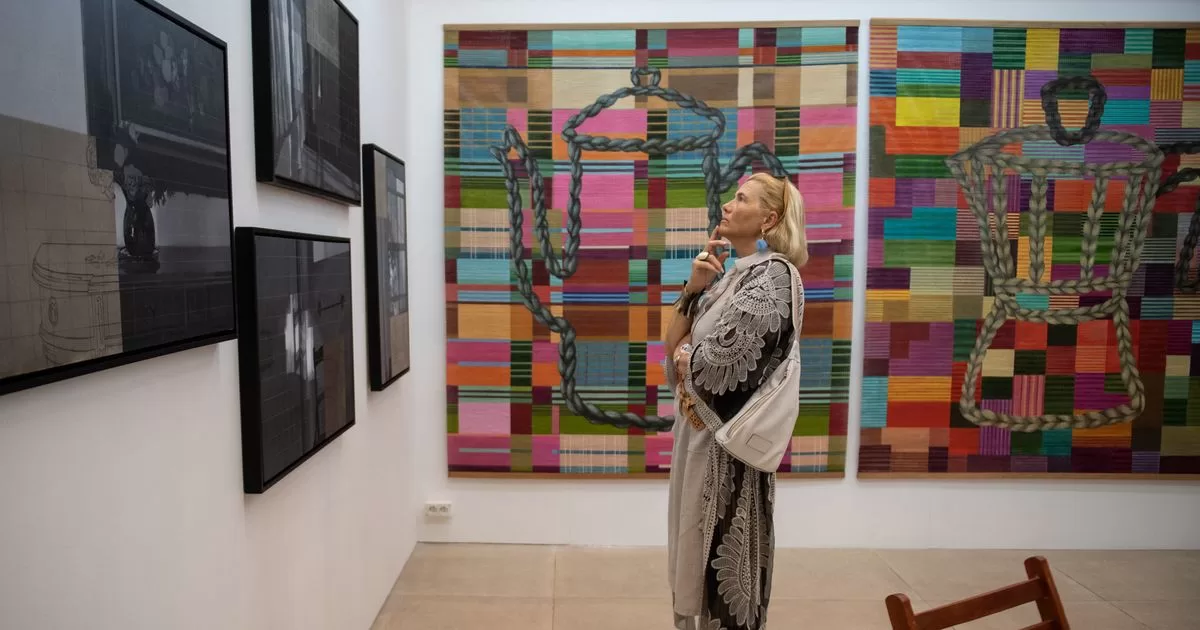Between seemingly endless golden Atlantic beaches and rolling grasslands where cows outnumber residents, this remote corner of Uruguay has become a center of art, culture and gastronomy. The buccal area is home to some of Uruguay’s main contemporary art museums, galleries, and film and photography festivals. Last week the town of José Ignacio hosted the tenth edition of the international fair This Art.
“When we started, most of the people I spoke to thought that you couldn’t do something like that in Uruguay. We’re not like Argentina or Brazil. There wouldn’t be enough buyers,” says Uruguayan art curator Laura Bardier.
However, the event is increasingly attracting collectors, some important and others who are taking their first steps, with pieces ranging between 300 and 2.5 million dollars, although most cost between 20,000 and 50,000.
Visiting from New York, neurosurgeon Rafael Ortiz and his wife, pediatric dentist Emille Agait, acquired a piece of art for their home in the Hamptons, a summer hotspot to which Jos Ignacio is often compared.
Agait said he couldn’t wait to tell his art-collecting friends about José Ignacio. “He is simple, relaxed, but elegant and fun. Everyone is beautiful,” he gushes.
“Desert of art”
For decades, the city of Punta del Este in eastern Uruguay has been the favorite summer resort of the South American elite, and its frenetic nightlife and waterfront skyscrapers have drawn comparisons with Miami or Monte Carlo.
However, those seeking more discreet sophistication are currently leaning toward towns located further east.
José Ignacio has incredibly expensive properties and excellent restaurants, in an environment of dirt roads and, further away, vineyards.
“In the eighties, José Ignacio was empty… only fishermen and local people lived there,” says gallery owner Renos Xippas. And until a decade ago, the region was: “a desert of art.”
According to Xippas, the COVID-19 pandemic caused many foreigners to seek to settle for a time in the sparsely populated rural areas of Uruguay and then decide to stay, after appreciating the quality of life prevailing in a country six times larger than Belgium but with a third of its population.
This helped boost the art market, or, rather, the resurgence of a very old tradition that the dictatorship that devastated the country between 1973 and 1985 had destroyed.
“Uruguayans are very cultured and very calm people,” observes Xippas.
“Nothing and silence”
“There has been a kind of revolution,” comments Pablo Atchugarry, a 69-year-old Uruguayan sculptor living in Italy, covered in the dust of the marble he is shaping.
“This space has been the epicenter” of that revolution, he indicates.
In 2022, Atchugarry will inaugurate Uruguay’s main contemporary art museum, the MACA, a huge ship-shaped structure located in the middle of nowhere, surrounded by a 40-hectare sculpture park.
The sculptor describes the area as a kind of Uruguayan Blue Coast, which attracts an audience with: “a very high purchasing power and a cultural interest in art.”
Both Atchugarry and other artists highlight the magical energy of eastern Uruguay.
“What attracted me was the light, the space, the nothingness and the tranquility. I think it is the perfect place to create,” says American photographer Heidi Lender, who chose to live in Pueblo Garzn, a small town with a railway tradition located 35 km north of José Ignacio, even deeper into the countryside.
There, Lender runs a nonprofit organization, Campo, which organizes residencies for artists from around the world.
With less than 200 permanent inhabitants, Pueblo Garzn is home to a handful of galleries and a restaurant run by renowned Argentine chef Francis Mallman. But some, like Austrian art collector Robert Kofler, worry that real estate speculation will ruin their slice of paradise.
Kofler owns a boutique hotel where he built an art installation that, he says, helped put José Ignacio on the world map.
He convinced the American artist James Turrell to bring one of his Skyspaces to the town: a dome of pure white marble through which visitors observe the sky at dusk, while artificial light distorts the perception of colors.
Kofler notes that he is constantly fighting attempts to build beach clubs or skyscrapers.
“What makes people fly 12 to 14 hours to come here?” he asks. “It’s this beauty, energy, tranquility and slowness. It’s getting away from what you know, from Saint-Tropez, Monaco or Malib. That’s why it’s so important to preserve it.”
FUENTE: AFP




